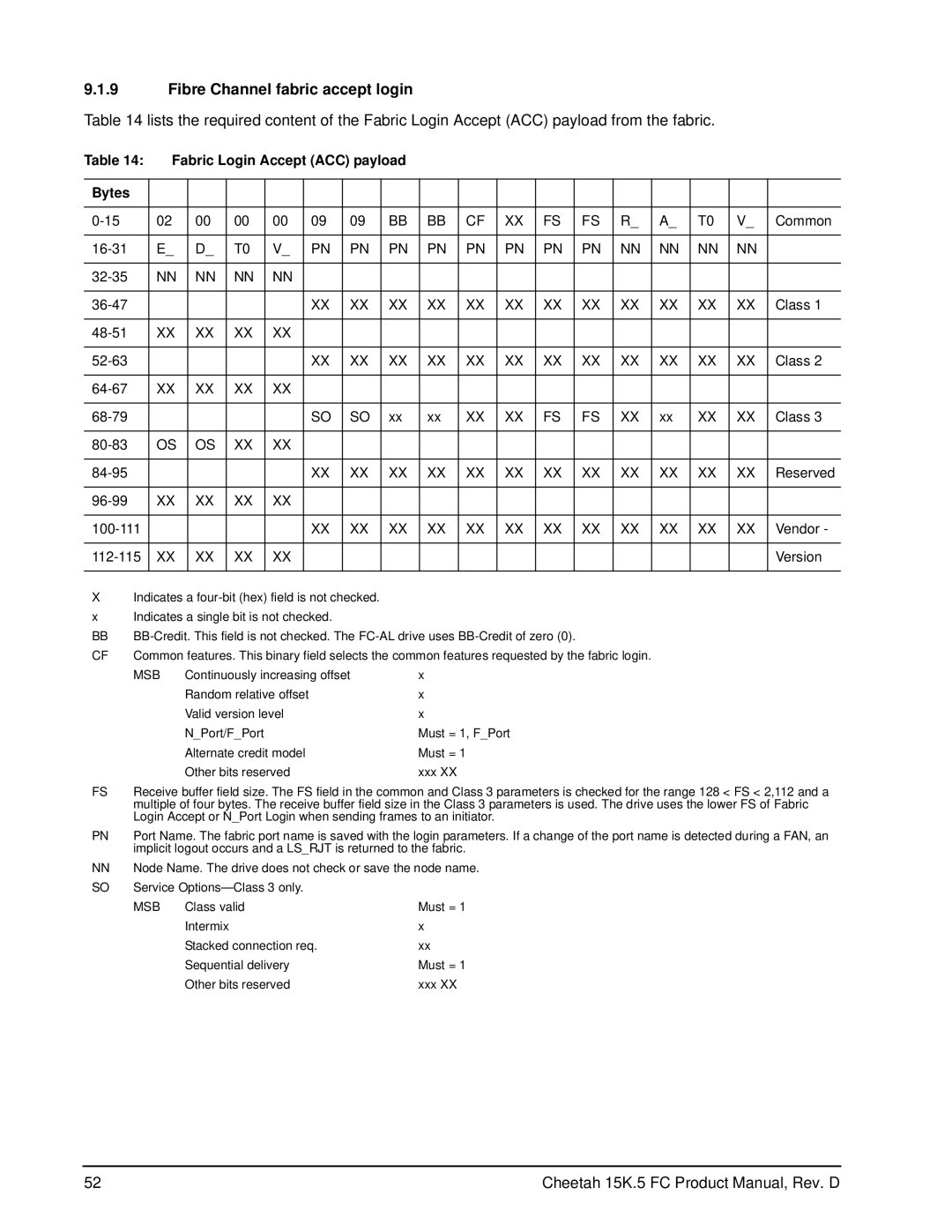ST3146855FC, ST373455FC, ST3300655FC specifications
Seagate is renowned for its commitment to high-performance data storage solutions, and their range of enterprise drives, including the ST3300655FC, ST373455FC, and ST3146855FC, demonstrates this dedication. These models cater to businesses requiring robust, reliable, and efficient hard disk drives (HDDs) designed for demanding environments.The ST3300655FC offers a capacity of 300 GB, making it suitable for a variety of enterprise applications. It utilizes a 15,000 RPM spindle speed, which significantly enhances its performance, delivering quick read and write times. This drive supports Serial Attached SCSI (SAS) interface, ensuring faster data transfer rates and reliability essential for critical computing environments. The dual-port connectivity of SAS allows for enhanced fault tolerance and redundancy, making the ST3300655FC ideal for data centers and enterprise storage systems.
Following closely, the ST373455FC provides a slightly larger capacity of 734 GB while maintaining the same 15,000 RPM speed. This drive's design focuses on high availability, making it an excellent choice for applications that require continuous uptime. Like its counterpart, it also benefits from the SAS interface, ensuring that data can be accessed quickly and reliably. The robust construction of the ST373455FC guarantees consistent performance under heavy workloads, an essential characteristic for enterprise use.
The ST3146855FC, with a capacity of 146 GB, offers a balance between speed and storage for enterprises that do not require the larger capacities provided by the other two models. It also operates at 15,000 RPM, benefiting from similar technological advancements as the ST3300655FC and ST373455FC. This drive maintains compatibility with existing systems, making it a versatile option for organizations looking to upgrade their storage solutions without overhauling their infrastructure.
All three models exhibit Seagate's commitment to durability and low power consumption, which is critical for reducing operational costs in data centers. They also feature advanced error recovery and data integrity technologies, ensuring that critical data remains intact and accessible. Enhanced thermal and vibration tolerance further extends the lifespan of these drives in challenging environments.
In summary, the Seagate ST3300655FC, ST373455FC, and ST3146855FC are tailored to meet the rigorous demands of enterprise environments. Their high spindle speeds, SAS connectivity, and robust designs make them exemplary choices for businesses seeking reliable and efficient storage solutions. Their distinctive features and technologies ensure that they deliver outstanding performance, data integrity, and durability, making them invaluable assets in any data-driven organization.
